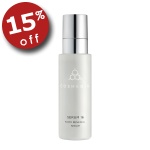The epidermis, the top most layer of skin, is only 0.1 to 1.5 millimeters thick. It is made up of five layers: the basal cell layer, the squamous cell layer, the stratum granulosum, the stratum lucidum, and the stratum corneum. Working together, these layers continually rebuild the surface of the skin from within, maintaining the skin’s strength and helping thwart wear and tear.
The process begins in the basal cell layer, the innermost layer of the epidermis. This layer houses small round cells called basal cells. These cells constantly divide, with the new cells constantly pushing older ones on a migration toward the surface of the skin. The basal cell layer is also called the stratum germinativum because it is constantly producing, or germinating, new cells.
The basal cell layer also contains melanocytes, specialized cells that produce a pigment called melanin. Melanin protects the skin against sun damage, and its rate of production determines skin color—the more melanin produced in the skin, the darker the skin appears. Exposure to the sun causes the melanocytes to increase melanin production in an effort to shield the skin from damaging ultraviolet rays; the resulting effect is a suntan. Freckles, birthmarks, and age spots are also caused by patches of melanin within the skin.
Above the basal cell layer is the squamous cell layer, also called the stratum spinosum or “spiny layer” because the cells are held together with spiny projections. Here lie the basal cells that have been pushed upward; these maturing cells are now called squamous cells, or keratinocytes. They have begun to produce keratin, a tough, protective protein that makes up a large part of the structure of the skin, hair, and nails. (Horses’ hooves, fish scales, and animal horns are also made of keratin.)
The squamous cell layer is the thickest layer of the epidermis. This is the layer of the skin that helps to move certain substances in and out of the body; it’s also where blisters form when the skin is chafed. The squamous cell layer also contains cells called Langerhans cells, If the skin becomes damaged, these cells latch onto invading antigens, substances that are foreign to the body, and alert the immune system to their presence.
The keratinocytes from the squamous layer are then pushed up
through two thin epidermal layers called the stratum granulosum and the stratum lucidum. As the cells migrate, they enlarge, flatten, and bond together, then eventually become dehydrated and die. The process fuses the cells into layers of tough. durable material, which continue to rise toward the skin’s surface.
As the layers near the surface, they become part of the stratum corneum, the outermost, visible layer of the epidermis. The stratum corneum (or “horny layer,” because its cells are toughened like an animal’s horn) is made up of 10 to 30 thin layers of these dead cells. External pressure or friction can cause thickened areas in the stratum corneum known as corns or calluses.
As the outermost cells give way to wear and tear, they are replaced from within by new layers of strong, long-wearing cells. In the average adult, it takes nearly a month for the stratum corneum to be completely replaced. The replacement process generally slows with age, though in some people it becomes abnormally accelerated, causing a flaky, scaly skin condition known as psoriasis.
|




 Today's random forum topics
Today's random forum topics
 What our customers are saying
What our customers are saying